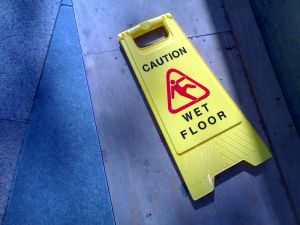Many people have heard the myth about a penny dropped from the top of the Empire State Building falling with enough force to kill someone standing below.
This assertion has been debunked by Scientific American, which reports a penny would cause neither serious injury or death because it is “too small and flat to become a dangerous projectile.” 
But, there are plenty of other falling objects that are potentially deadly.
Workers on construction sites face a tremendous risk of a falling object. A Boston work injury lawyer knows wearing a hard hat and following other safety precautions set by the Occupational Safety and Health Administration can help to reduce the chances of a deadly incident occurring.
Sometimes, however, an object can fall from too far up or can fall onto an unprepared worker and the outcome may be tragic.
Continue reading
 Massachusetts Workers Compensation Lawyers Blog
Massachusetts Workers Compensation Lawyers Blog




 According to a recent news release from the United States Occupational Safety and Health Administration (
According to a recent news release from the United States Occupational Safety and Health Administration ( X-rays of her hand were negative for physical injuries and a head CT scan showed no abnormalities. Her doctor stated that she had nearly fully recovered but recommended continued physical therapy. After completing physical therapy, she had made a significant recovery from her injuries, according to her PCP.
X-rays of her hand were negative for physical injuries and a head CT scan showed no abnormalities. Her doctor stated that she had nearly fully recovered but recommended continued physical therapy. After completing physical therapy, she had made a significant recovery from her injuries, according to her PCP. Claimant slipped on a wet floor at the medical center and seriously injured her right leg, hip, lower back, and neck. She quickly applied for workers’ compensation benefits and was awarded around $580 per week as the maximum allowable benefit under a temporary total disability rating. This happened in 2006.
Claimant slipped on a wet floor at the medical center and seriously injured her right leg, hip, lower back, and neck. She quickly applied for workers’ compensation benefits and was awarded around $580 per week as the maximum allowable benefit under a temporary total disability rating. This happened in 2006. He was diagnosed with malignant pleural mesothelioma at the end of 2005. He filed a products liability lawsuit against several asbestos manufacturers and gave a videotaped deposition in 2007. He died that year. Following his death, his wife filed a workers’ compensation claim against defendant.
He was diagnosed with malignant pleural mesothelioma at the end of 2005. He filed a products liability lawsuit against several asbestos manufacturers and gave a videotaped deposition in 2007. He died that year. Following his death, his wife filed a workers’ compensation claim against defendant. He was trying to check the oil on a machine known as a bakery loader after service had been performed on the equipment. He placed his head into the gearbox area to view the oil level, but the machine guards had not been reinstalled after being serviced. A gear arm rotated without warning and struck him in the head, trapping it between the gear arm and the metal frame.
He was trying to check the oil on a machine known as a bakery loader after service had been performed on the equipment. He placed his head into the gearbox area to view the oil level, but the machine guards had not been reinstalled after being serviced. A gear arm rotated without warning and struck him in the head, trapping it between the gear arm and the metal frame. According to the United States Occupational Safety and Health Administration (
According to the United States Occupational Safety and Health Administration ( OSHA inspectors discovered that a conveyor belt’s rotating parts were not properly guarded to prevent the hands and fingers of workers from getting caught in the mechanism. Conditions similar to this have been known to cause pinched hands and fingers, crushed or amputated hands and fingers, contusions and nerve damage. The law requires these conveyor belt systems be properly guarded so no part of an employee’s body can come into contact with moving machinery.
OSHA inspectors discovered that a conveyor belt’s rotating parts were not properly guarded to prevent the hands and fingers of workers from getting caught in the mechanism. Conditions similar to this have been known to cause pinched hands and fingers, crushed or amputated hands and fingers, contusions and nerve damage. The law requires these conveyor belt systems be properly guarded so no part of an employee’s body can come into contact with moving machinery. Inspectors found employees working on top of a two-story residential roof without fall protection equipment. According to federal regulations, roofing workers are to be provided with fall protection equipment. In this case, they were without such safety equipment due to a deliberate failure on behalf of the employer.
Inspectors found employees working on top of a two-story residential roof without fall protection equipment. According to federal regulations, roofing workers are to be provided with fall protection equipment. In this case, they were without such safety equipment due to a deliberate failure on behalf of the employer. Claimant began working for employer in November of 2006. On a typical workday, claimant would see multiple patients in their respective homes. She drove her personal vehicle when going to see her clients. She would stop in the office to pick up supplies, read her mail, and attend company meetings.
Claimant began working for employer in November of 2006. On a typical workday, claimant would see multiple patients in their respective homes. She drove her personal vehicle when going to see her clients. She would stop in the office to pick up supplies, read her mail, and attend company meetings.